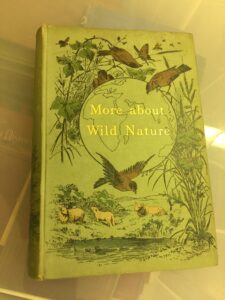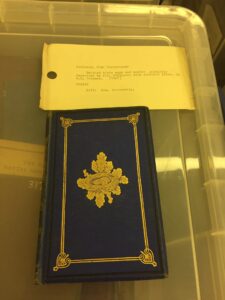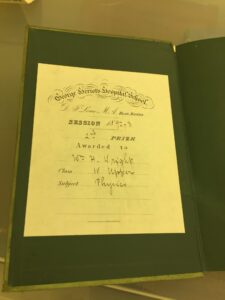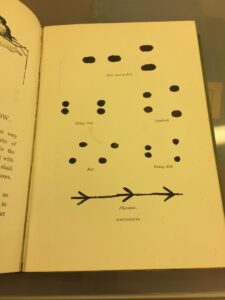One recent box-unpacking afternoon led Niamh to discover the Museum’s extensive collection of nineteenth-century naturalist writing for children. Here, she reflects on the beauty and vibrancy of these books which encouraged their child readers to be keenly alert to, and understanding of, nature’s wonder and diversity. Something more than ever worth being reminded of, given the fragility of our own world – and all our connections to, and within, it.
*
Just the other day, while rummaging around the boxes deep in the bowels of the City Chambers, I came across some books on wildlife. Their covers were far from all-singing, all- dancing but I am a real sucker when it comes to things that seem all too neglected.


On opening one of them, I was rewarded for my taking pity; this volume had been awarded as a prize for Physics. The choice of books awarded for scholastic achievement is often very indicative of the values that Victorian schools, and thus that society, held dear. Natural History occupied a very privileged place in the education of that group. It was a discipline that ‘fascinated the Victorians … [it] was a fashionable activity and significantly participated in the construction of a bourgeois ethic’ and for the Victorians was key to exploring ‘ways in which … literary tales are informed with natural historical knowledge’ (Laurence Talairach-Vielmas, Fairy Tales, Natural History, and Victorian Culture [2014], pp. 1, 3). This branch of learning, once rather mainstream, has dwindled; it is now a discipline largely reserved to those who have chosen this aspect of science.

It seems, to me, more and more important that we look back, not in a nostalgic misty-eyed way, but in a spirit of reassessment of our current situation, in order to live better, that is to say truly to live. Slowly, slowly, as a species, we are letting technology exert more and more influence over our day to day existence. This is not wholly lamentable but it does strike me that there is need to take stock. A people glued to social media may be more informed about certain things but they will miss out on the beauty of life all around them. Surely, a world viewed in the raw and unprocessed is one that is much more beautiful than one subjected to the filters and tints of technology because it is all the more real.

This post written by Niamh



I really enjoyed this piece–both for the idea of Pawprint literacy and for the links between literature and nature in writing for children.
Thank you very much, Jacqui. It’s a really important thread running right through children’s literature in all different ways. Our exhibition next year will have a dedicated section on nature books – and the pawprints will be in there!
Thank you so very much for your warm words about my post. Natural History, while not highly represented in the works of today, has a great tradition in earlier children’s literature. I am such a big fan of the natural world and these sorts of books make me so very happy. I do hope that you can make it to our exhibition and have a good look at this text and others of the genre.
Thank you so very much for your warm words about my post. Natural History, while not highly represented in the works of today, has a great tradition in earlier children’s literature. I am such a big fan of the natural world and these sorts of books make me so very happy. I do hope that you can make it to our exhibition and have a good look at this text and others of the genre.